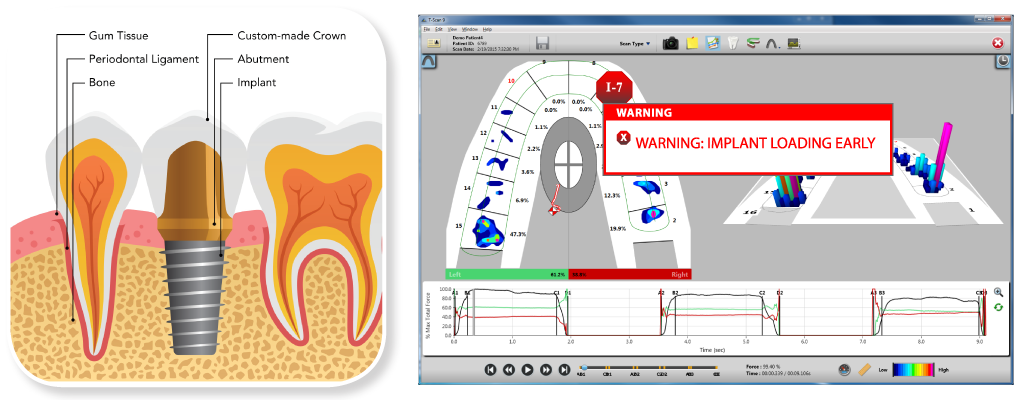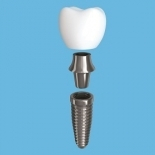Achieve Optimal Occlusal Loading with T-Scan™
Research studies show that 54% of patients experience prosthetic complications1.
Although implant dentistry is the best option for most patients improper loading of these implants and crowns can lead to a number of prosthetic and surgical complications:
- Early implant failure
- Ceramic and abutment fracture
- Loss of alveolar bone
- Screw loosening
- Destruction of soft tissue
(1) Shen HD, Di P, Li JH, Luo J, Zhang Y, Lin Y. Complications of implant-supported full-arch immediate prosthesis: a retrospective analysis of 114 cases. Zhonghua Kou Qiang Yi Xue Za Zhi. 2018 9; 53(4): 236-242. doi: 10.3760/cma.j.issn.1002-0098.2018.04.005.
The periodontal ligament (PDL) plays the role of a shock absorber during mastication. Under occlusal loading, the fibers of the PDL give way to absorb the force as the natural tooth is compressed. With implants firmly attached to the bone through osseointegration, little movement is possible causing either the alveolar bone to give way or more likely, the crown to fracture. Adjusting a patient’s occlusion to ensure the natural teeth contact first (and take most of the force) protects the bone and crown.
Only T-Scan can show the sequence of tooth contact and distribution of force to ensure longevity of implants.
 The "Implant Loading Alert" from T-Scan Novus provides clear evidence on whether adjustments may be needed.
The "Implant Loading Alert" from T-Scan Novus provides clear evidence on whether adjustments may be needed.
Why Do You Use T-Scan for Implant Dentistry?
Explore These Resources to Learn More About How Dentists are using T-Scan to Minimize Implant Complications
|
Data Confirms what a Patient Feels |
Checking Occlusion on Implant Prosthesis Preventing Implant Complications Using Case-Finishing Technology |
Implant Occlusion in the Digital Age of Dentistry |
Download the Implant Flyer
Additional & Notable Research Citations
Lerner, H Implant Complications After Installation with Traditional Vs Digital Occlusal Indicators, Adv Dent Tech, February, 2024
Qadeer. S. Delayed Loading on Implant Prosthesis using Computerized Occlusal Analysis- Part 2. Asnan Portal, December 2013
Kerstein, RB. T-Scan III applications in mixed arch and complete arch implant supported prosthodontics. Dent Implantol Update, 2008;19(7), 49-53.
Kerstein, RB. Radke J. The effect of Disclusion Time Reduction on maximal clench muscle activity level. Journal of Craniomandibular Practice, 2006: 24 (3);156-165.
Kerstein, R.B. (2002). Nonsimultaneous Tooth Contact in Combined Implant and Natural Tooth Occlusal Schemes. Practical Periodontics and Aesthetic Dentistry,13(9), 751-756.



